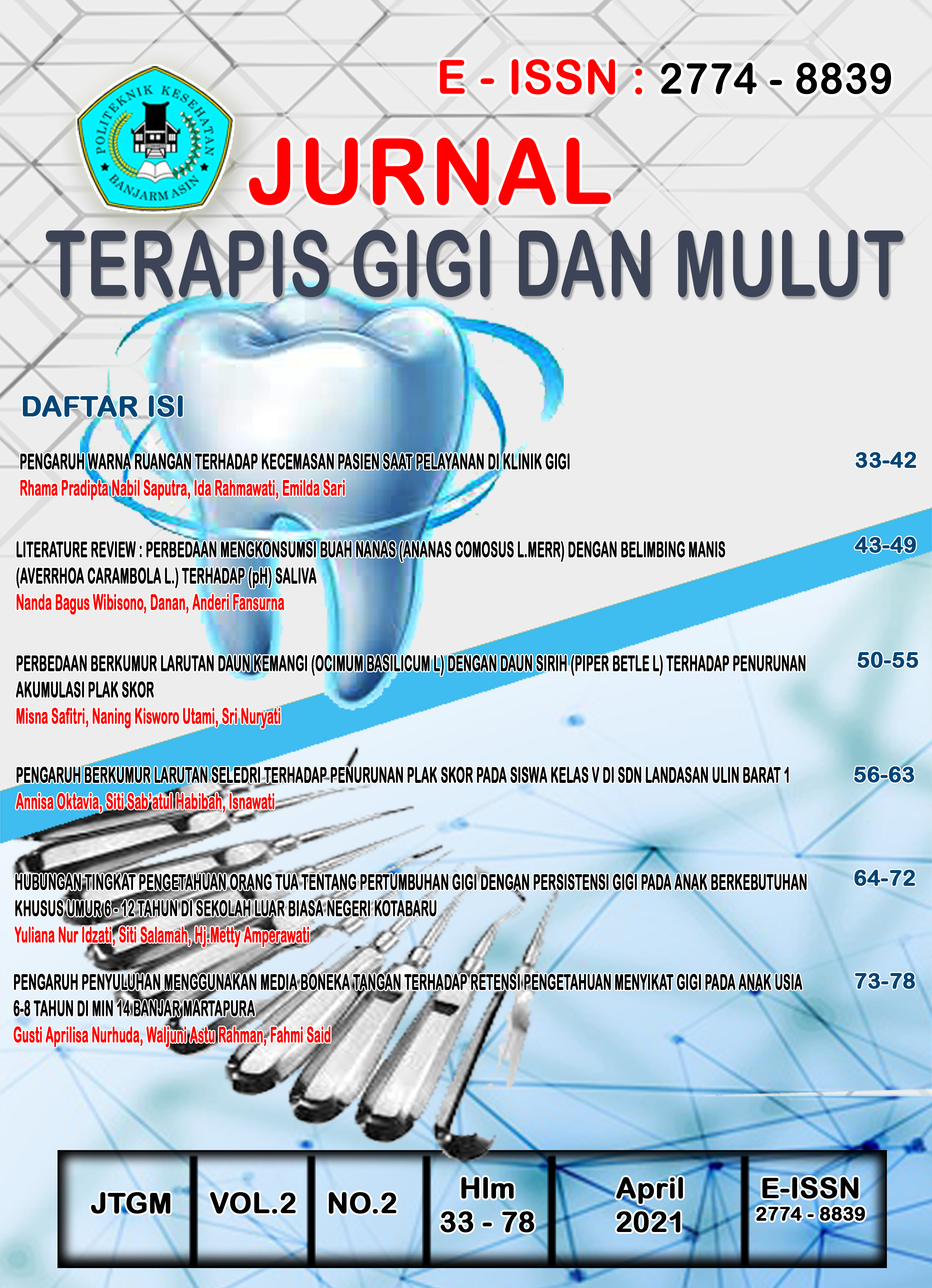PERBEDAAN MENGKONSUMSI BUAH NANAS (ANANAS COMOSUS L.MERR) DENGAN BELIMBING MANIS (AVERRHOA CARAMBOLA L.) TERHADAP (pH) SALIVA LITERATURE REVIEW
Main Article Content
Abstract
Since 1901, Rigolet has found that patients with little or no salivary secretions, for example due to aprialismus, radiation therapy for malignant cancer, and xerostomia, have an increasing percentage of dental caries. Saliva is one component that affects the process of caries because saliva always wet the teeth so that it affects the environment in the oral cavity. Saliva also has different composition and concentration that can affect the condition of salivary secretion so that the environment of the oral cavity of each individual is different.
This study aims to determine the differences in consuming pineapple and sweet star fruit on saliva pH. This type of research is a literature study, the design used in this study is a meaningful literature study, data collection techniques by conducting a review of books, literature, notes, and various reports relating to the problem to be solved.
The results of this study indicate the average value of salivary pH before chewing pineapple is 6.7250 including acid criteria and salivary pH after chewing pineapple is 6.1500 including acid criteria, the results of the method differ quite significantly (significant), while the value The p-value of the t-test is 0,000 which means that the probability is less than 0.05.
Based on the results of the study, it can be concluded that consuming pineapple and sweet star fruit can reduce the level of acidity of salivary pH, taste levels in pineapple and sweet star fruit have the effect of suppressing the growth of Streptococcus mutans bacteria in a person's oral cavity. It is expected that the community, especially parents, to their children to maintain oral health by consuming fruits that contain fiber, for example pineapple and sweet star fruit
